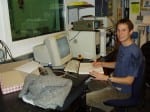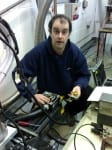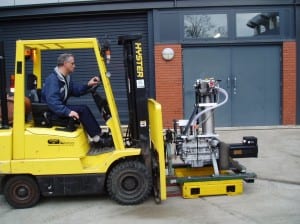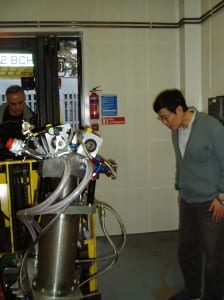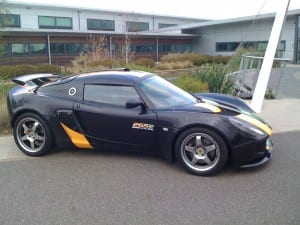
A while back, I was over at the Lotus Engineering Centre in Hethel, giving an IMechE sponsored talk on
Integrating Technologies for Low Carbon Vehicles
Lotus had laid on a display of a selection of their ‘Future Technologies’ vehicles, all of which concentrate on aspects of the green automotive agenda.
Lotus Exige Biofuel
The Lotus Exige Biofuel pictured runs on E85 biofuel which is an 85% Ethanol blend derived from bio-crops. Although Brazil has traditionally been the world-leader in this approach, it has recently been overtaken by the US. The approach does have some drawbacks however. In a by-volume comparison, E85 has 30% less energy potential than conventional gasoline. Critics have proposed that a net energy loss may result when the entire supply chain from starchy plant to vehicle is taken into account.
The 265E pictured here started its life as a standard Exige, but with the addition of larger fuel injectors and modifications to the supercharger, the vehicles engine management system has been adapted so that it can switch between conventional gasoline and E85.

Lotus ECO Elise
Also on show was the ECO Elise project, which concentrates on green technologies applied to the whole vehicle. The body panels are composites manufactured from sustainable materials such as Hemp. The dark brown stripe on the bonnet has been left unpainted and merely lacquered, to show off the bio-material making up the body panels. This approach extends to water-based body paint and minimisation of energy expended in manufacture.
A nice touch is the solar panels embedded into the hemp composite of the roof material.
Future Thinking
More information about these and more innovative projects can be found at
http://www.lotuscars.com/engineering/en/future-thinking
Lotus and Lincoln
Lincoln’s School of Engineering has a long history of performing collaborative research projects with Lotus Engineering, from novel powertrain design for hybrid vehicles, to providing consultancy services to organisations such as the Carbon Trust and ITI Energy.


